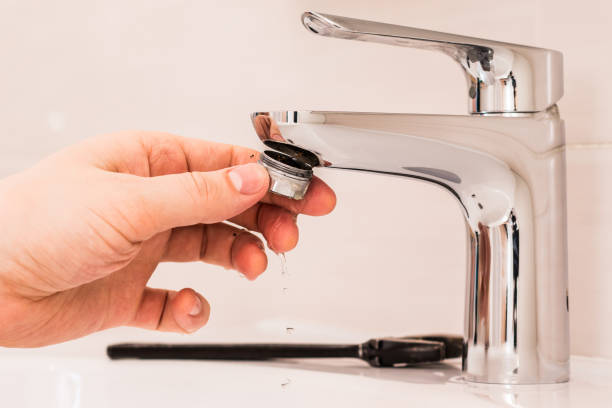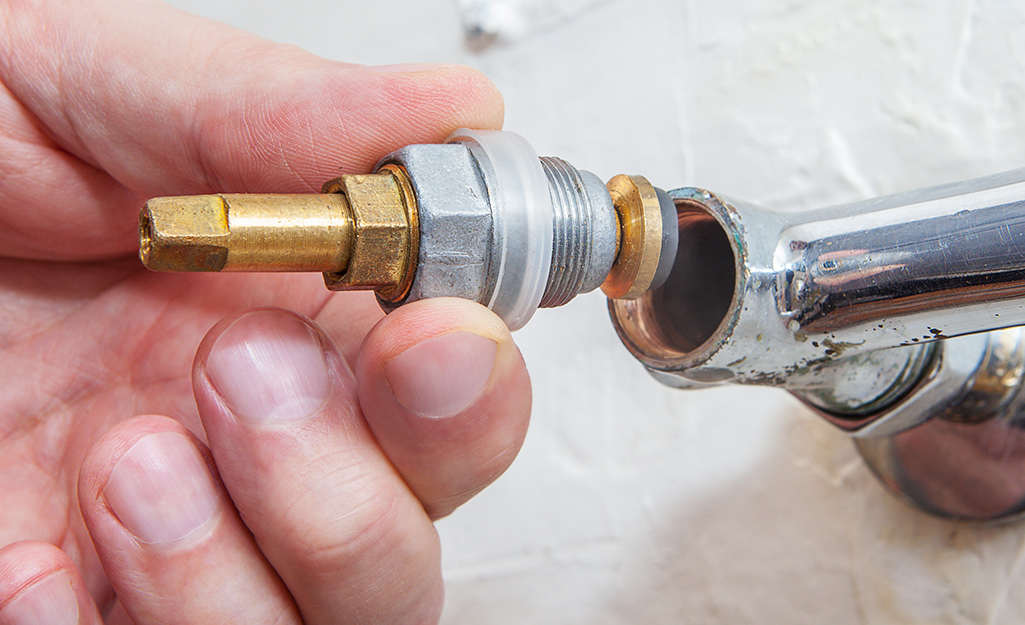Were you hunting for insight around Why It's Important to Fix Leaky Faucets?

Trickling taps might feel like a small hassle, however their impact goes beyond simply the nuisance of the sound. From drainage to incurring unneeded monetary costs and wellness dangers, disregarding a trickling faucet can lead to different consequences. In this write-up, we'll delve into why it's critical to resolve this common home concern immediately and effectively.
Waste of Water
Ecological Effect
Trickling faucets add considerably to water wastefulness. According to the Environmental Protection Agency (EPA), a single tap dripping at one drip per secondly can waste more than 3,000 gallons of water per year. This not just strains water resources yet also impacts ecosystems and wild animals dependent on them.
Financial Prices
Increased Water Expenses
Past the ecological effect, leaking taps can inflate water expenses significantly. The accumulated wastefulness in time converts into greater utility expenses, which can have been avoided with timely repair work.
Possible Home Damage
In addition, prolonged leaking can bring about harm to components and surface areas surrounding the faucet. Water buildup can create staining, corrosion, and even structural problems if left ignored, causing added repair costs.
Health Issues
Mold and Mildew Growth
The continuous existence of wetness from a leaking faucet creates an optimal atmosphere for mold and mildew development. These fungis not just jeopardize interior air high quality but also pose health threats, specifically for people with respiratory system problems or allergies.
Waterborne Illness
Stagnant water in trickling faucets can come to be a breeding place for germs and various other virus, raising the threat of waterborne diseases. Contaminants such as Legionella germs flourish in stagnant water, potentially resulting in major illnesses when ingested or breathed in.
DIY vs. Specialist Repair work
Pros and Cons of Do It Yourself Repair Service
While some may attempt to deal with a trickling faucet themselves, do it yourself repair services come with their very own collection of obstacles. Without correct expertise and tools, DIY attempts can exacerbate the concern or result in incomplete repair services, lengthening the trouble.
Benefits of Hiring a Specialist Plumber
Hiring a professional plumber makes certain that the underlying root cause of the leaking tap is resolved effectively. Plumbings possess the expertise and equipment to diagnose and fix tap problems efficiently, conserving time and minimizing the risk of further damage.
Step-by-Step Guide to Fixing a Dripping Tap
Tools Needed
Before attempting to repair a leaking tap, collect the essential devices, consisting of a flexible wrench, screwdrivers, replacement parts (such as washers or cartridges), and plumber's tape.
Typical Faucet Issues and Their Solutions
Determine the type of tap and the specific problem creating the drip. Common troubles include worn-out washing machines, rusty valve seats, or faulty O-rings. Describe manufacturer guidelines or on the internet tutorials for step-by-step support on repair services.
Safety nets
Regular Maintenance Tips
To stop dripping faucets, perform regular upkeep such as cleaning aerators, examining for leaks, and replacing damaged parts without delay. In addition, think about setting up water-saving gadgets or upgrading to much more reliable components.
Significance of Prompt Services
Attending to trickling taps as quickly as they're seen protects against further water wastage and potential damage, inevitably saving both water and cash in the future.
Effect On Home Worth
Perception of Well-Maintained Residential Or Commercial Property
Preserving a residential or commercial property in good condition, consisting of attending to upkeep issues like dripping taps, enhances its regarded worth and charm among potential buyers or renters.
Impact on Resale Worth
Residences with well-maintained plumbing components, consisting of faucets, command higher resale worths in the realty market. Attending to dripping faucets can add to a favorable perception throughout residential or commercial property inspections and negotiations.
Ecological Duty
Private Payment to Preservation
Taking duty for repairing leaking faucets straightens with wider efforts towards water conservation and environmental sustainability. Every individual's activities jointly make a significant impact on preserving priceless resources.
Lasting Living Practices
By prioritizing punctual repair work and adopting water-saving routines, individuals add to sustainable living techniques that profit both existing and future generations.
Conclusion
Addressing a trickling faucet goes beyond plain comfort; it's an essential step toward saving water, lowering financial expenses, and securing health and wellness and home. Whether via do it yourself repairs or professional support, acting to deal with leaking taps is a little yet impactful means to promote responsible stewardship of sources and add to a healthier, more sustainable future.
How to Fix a Leaky Faucet: Step-by-Step Repair Guide
A leaky faucet may seem like a simple annoyance, but if it's not fixed promptly, that leak could cost hundreds to potentially thousands. From water damage to mold, mildew, and high water bills, even a tiny leak can be catastrophic if left unattended. Damage like this can even affect the overall value of your home, so it's important to take the right approach for leaky faucet repair. You may need the help of a plumber in some cases, but we've got a few tips you can try on how to fix a leaky faucet before calling the pros.
Four Faucet Types
When you're learning how to fix a leaky faucet, the first step is knowing what kind of faucet you're working with! There are four common types.
Cartridge Faucets
Cartridge faucets come in one- or two-handled varieties. In one-handled cartridge faucets, hot and cold water combines in a single cartridge. In the two-handled versions, hot and cold water are controlled separately and mixed in the faucet.
Ball Faucets
Ball faucets have a single lever you push up and down to adjust the pressure and rotate to change the temperature. A slotted metal ball controls the amount of water allowed into the spout.
Compression Washer Faucets
They're the oldest type of faucet, but they're still used in many homes — especially older ones. Compression faucets have two separate handles that, when turned, raise or lower the washer that seals a water valve. This valve stops water from flowing through the faucet when it is turned off.
Disc Faucets
Disc faucets rarely need to be repaired due to their maintenance-free design. The water flow is controlled by two discs — the upper one raises and lowers against a fixed lower disc, creating a watertight seal. If your disc faucet starts leaking, you may need to replace the seals or clean residue buildup from the inlets.
Fixing a Leaky Faucet
Step 1: Turn Off the Water
Whether you're learning how to fix a leaky bathtub faucet or how to fix a leaky kitchen faucet, always turn off the water supply to your working area when you're fixing a leak. The last thing you want is a flood added to your list of things to fix.
Look for the shutoff valves below your sink or around the tub and turn them clockwise to stop the water flow. If your faucet doesn't have shutoff valves, you may need to turn off the water for the whole house. Check to make sure it's off by turning the faucet on. If nothing comes out, you're ready to start the repair.
Step 2: Take Apart the Faucet
How you disassemble your faucet depends on the type of fixture you have. You can use a flathead screwdriver to remove the caps on top of the handle or handles for cartridge and compression faucets. Inside, you should see handle screws. Unscrew these with a screwdriver to remove the handle.
Disc- and ball-style faucets will typically have an inlet screw near the handle, and removing that will reveal the interior of the faucet.
Detach the Valve Stem
For cartridge- and compression-style faucets, you'll see the inner valve stem or cartridge once you remove the faucet handles. If you have a compression faucet, unscrew the brass valve stem. If you have a cartridge faucet, pull out the cartridge. If your cartridge has been in place for a while, it may require some tools or extra force to remove it due to mineral deposits.
Examine and Replace Parts
Once you've removed the parts, check them out to confirm what needs to be replaced. You may see corroded rubber washers, O-rings, stems, or cartridges. On a ball-style faucet, check the seats and springs for damage.
If you need to repair a leaky disc faucet, check the inlet and seals on the lower disc.
Once you determine what parts must be replaced, visit your local hardware store. Bring the damaged parts with you to ensure you can purchase the correct components to replace them.
Clean Valves and Faucet Cavity
If you've removed a stem or cartridge, you may notice mineral buildup in the faucet's threads. Use white vinegar to clean the valve seat by soaking it for a few minutes, then scrub it away with a soft toothbrush and rinse with warm water. You can also clean the interior of the faucet in the same way.
Reassemble the Faucet
Once your faucet is cleaned and the required parts have been replaced, it's time to reassemble it. Put the pieces back together and slowly turn the water supply back on. Doing this slowly is crucial because too much initial water pressure can damage the new hardware you've just installed.
https://homewarranty.firstam.com/blog/how-to-fix-leaky-faucet

I ran across that content about Why Are My Faucets Dripping (And Can I Fix It Myself)? while doing a search on the web. Remember to take a moment to promote this page if you appreciated it. Thank-you for taking the time to read it.
Comments on “Your Reasons Behind Addressing a Broken Faucet”